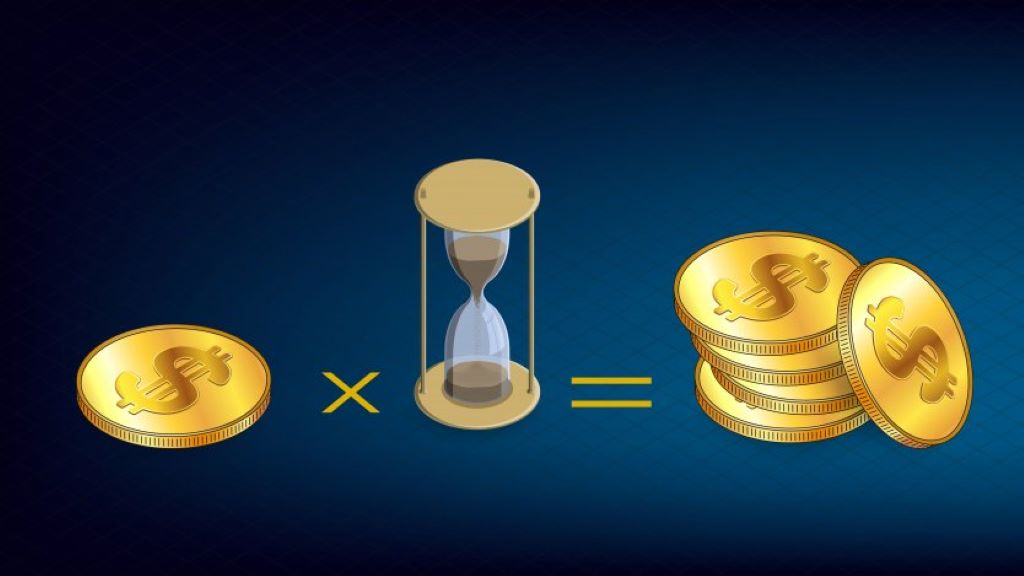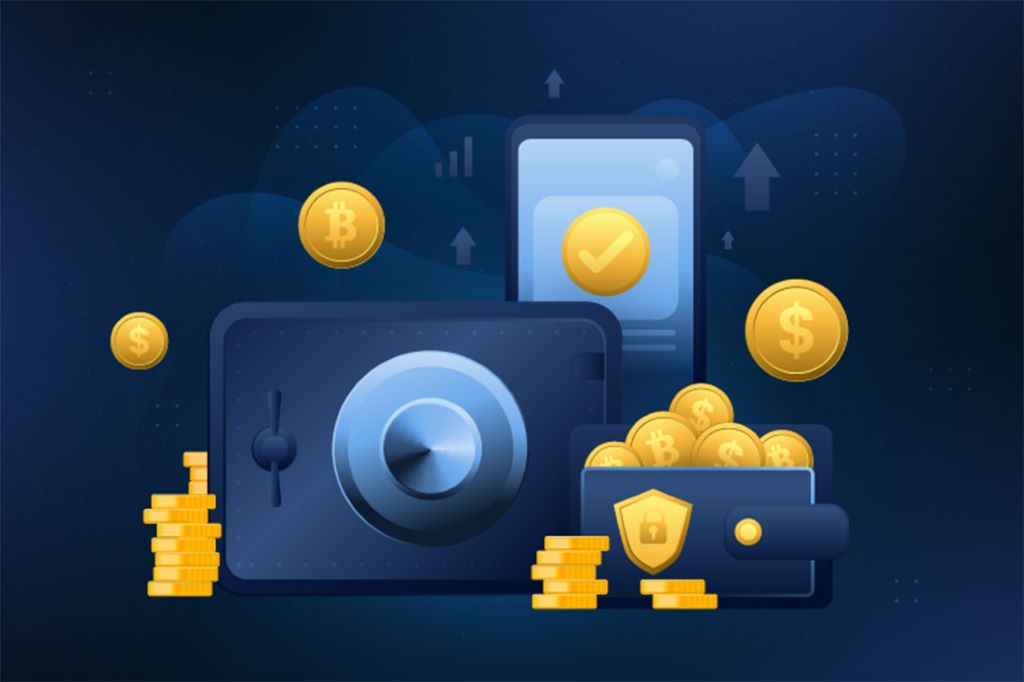
Have you ever heard of making money while you sleep? Well, that’s precisely what crypto staking is all about! Imagine your cryptocurrency working for you 24/7, earning you more digital coins without lifting a finger. It may sound like something out of a sci-fi movie, but it’s real, and it’s called staking. In this comprehensive guide, we’ll take you on a journey through how does staking crypto work, breaking down the complexities into bite-sized, easy-to-understand pieces.
What is Crypto Staking?
Let’s start with the basics. Crypto staking is a process that allows you to earn rewards by participating in the validation and security of a blockchain network. In simpler terms, it’s like becoming a mini-banker for a cryptocurrency network. When you stake your crypto, you help confirm transactions and maintain the network’s integrity, and in return, you receive rewards.
How Does Staking Work?
Here’s the nitty-gritty of how staking crypto works:
- Choose the Right Cryptocurrency: Not all cryptocurrencies support staking, so the first step is to choose one that does. Some popular options include Ethereum (ETH), Cardano (ADA), and Polkadot (DOT). Each of these networks has its unique staking requirements and rewards.
- Get Some Crypto: To stake, you need to own some of the cryptocurrency you want to stake. You can buy it on a cryptocurrency exchange just like you would with any other digital currency.
- Select a Staking Platform: Staking usually occurs on a dedicated staking platform or within a cryptocurrency wallet that supports staking. Popular options include Binance, Kraken, and Coinbase. These platforms make it easy for you to stake your tokens and earn rewards.
- Lock Your Tokens: When you stake your cryptocurrency, you essentially lock it up for a predetermined period. This period varies depending on the cryptocurrency and the staking platform. It could be a few days, weeks, or even months.
- Participate in Network Validation: By staking your tokens, you become part of the network’s consensus mechanism. In simpler terms, you help confirm and validate transactions, making the network more secure and efficient.
- Earn Rewards: As a reward for your participation, you receive additional cryptocurrency tokens. The amount you earn depends on various factors, including the amount you’ve staked and the network’s rules.
- Compound Your Rewards: Many staking platforms allow you to automatically reinvest your staking rewards. This means your earnings can grow exponentially over time as you earn rewards on your rewards.

Why Do Cryptocurrencies Need Staking?
You might wonder why cryptocurrencies need staking in the first place. Well, it’s all about security and maintaining the blockchain network.
Imagine a group of friends playing a game, and every time someone makes a move, they need approval from the others. Staking is like being one of those friends who ensures that each move is legitimate. In the world of cryptocurrencies, this approval process keeps the network secure and prevents fraudulent transactions.
Here’s why cryptocurrencies need staking:
- Security: Staking helps prevent malicious actors from taking control of the network. By requiring participants to lock up their tokens, it discourages bad actors from trying to manipulate the system.
- Decentralization: Cryptocurrencies are all about decentralization, which means they aren’t controlled by a single entity. Staking helps maintain this decentralization by involving a network of validators rather than a central authority.
- Efficiency: When you stake your crypto, you’re actively participating in the network’s operation. This reduces the need for energy-intensive mining processes, making the network more energy-efficient.
- Incentivizing Participation: By offering rewards, cryptocurrencies incentivize users to stake their tokens and actively participate in the network. This encourages a healthy ecosystem.
Staking vs. Mining: What’s the Difference?
You might have heard of cryptocurrency mining, which is another way to earn crypto rewards. So, what’s the difference between staking and mining?
Mining involves solving complex mathematical puzzles to validate transactions and secure the network. Miners use powerful computers to compete for the right to add new blocks to the blockchain. When they succeed, they’re rewarded with newly created cryptocurrency tokens and transaction fees.
On the other hand, staking doesn’t involve solving puzzles or using massive computing power. Instead, it requires you to lock up a certain amount of cryptocurrency as collateral to participate in the network’s validation process. The more tokens you stake, the higher your chances of being chosen to validate transactions, and the more rewards you earn.
To put it simply, mining is like a race where the fastest computer wins, while staking is like a lottery where the more tickets (tokens) you have, the better your odds of winning.

Benefits of Crypto Staking
Now that you understand how staking works let’s explore some of the benefits:
- Passive Income: Staking allows you to earn passive income by simply holding and staking your cryptocurrency. You don’t need to actively trade or monitor the market.
- Compound Growth: By reinvesting your staking rewards, you can enjoy compound growth, which means your earnings generate more earnings over time.
- Supporting the Network: When you stake your tokens, you contribute to the security and stability of the cryptocurrency network, helping it grow and thrive.
- Reduced Environmental Impact: Unlike energy-intensive mining, staking is more eco-friendly because it doesn’t require massive amounts of electricity.
- Diversification: Staking allows you to diversify your crypto portfolio by earning rewards from different cryptocurrencies. This can help spread risk and enhance your overall investment strategy.
- Predictable Rewards: Staking often provides predictable and stable rewards, making it a more reliable source of income compared to the volatility of trading.
Challenges and Risks of Crypto Staking
While crypto staking offers many benefits, it’s not without its challenges and risks. Here are some things to keep in mind:
- Lock-Up Periods: When you stake your tokens, you typically commit to a lock-up period during which you can’t access or sell your assets. If you need quick access to your funds, staking might not be the best option.
- Volatility: Cryptocurrency prices can be highly volatile. The value of your staked tokens could decrease during the lock-up period, impacting your overall returns.
- Network Risks: If the cryptocurrency network you’re staking on experiences technical issues or security breaches, it could affect your staked assets and rewards.
- Choosing the Right Staking Platform: Not all staking platforms are created equal. It’s crucial to research and select a reputable and secure platform to avoid scams or loss of funds.
- Regulatory Changes: Cryptocurrency regulations can change, which may impact the legality and profitability of staking in your region.
- Token Devaluation: The rewards you earn through staking may not always keep up with inflation or the devaluation of the cryptocurrency, leading to diminished purchasing power.
How to Get Started with Crypto Staking
Excited to dive into the world of crypto staking? Here’s a step-by-step guide to help you get started:
- Choose Your Cryptocurrency: Research and select a cryptocurrency that supports staking and aligns with your investment goals.
- Acquire the Cryptocurrency: Purchase the chosen cryptocurrency from a reputable exchange or platform.
- Select a Staking Platform: Sign up for a cryptocurrency wallet or platform that offers staking services. Ensure it’s secure and user-friendly.
- Transfer Your Tokens: Transfer the cryptocurrency you want to stake from your exchange wallet to your staking wallet on the chosen platform.
- Start Staking: Follow the platform’s instructions to start staking your tokens. You’ll typically need to specify the amount to stake and the duration of the lock-up period.
- Monitor Your Rewards: Keep an eye on your staking rewards, and consider reinvesting them to maximize your earnings.
- Stay Informed: Stay updated on the cryptocurrency market and any changes in staking rules or regulations that may affect your investment.
Remember that the specific steps may vary depending on the cryptocurrency and staking platform you choose, so always refer to the platform’s guidelines for accurate instructions.
FAQs
- Is staking crypto risk-free?No, staking crypto carries risks, including the potential loss of your staked tokens due to price volatility, network issues, or regulatory changes. It’s essential to research and understand these risks before staking.
- How do I choose the right staking platform?When selecting a staking platform, consider factors like security, reputation, ease of use, fees, and the cryptocurrencies it supports. Reading user reviews and seeking recommendations can also be helpful.
- Can I unstake my tokens before the lock-up period ends?Some staking platforms allow you to unstake your tokens before the lock-up period ends, but this often comes with penalties or reduced rewards. Check the platform’s terms and conditions for details.
- Are staking rewards taxable?Taxation of staking rewards varies by country. In some regions, staking rewards may be subject to capital gains tax. It’s advisable to consult with a tax professional to ensure compliance with local tax laws.
- Can I stake multiple cryptocurrencies at once?Yes, you can stake multiple cryptocurrencies simultaneously if the staking platform supports them. This allows you to diversify your staking portfolio and potentially earn rewards from different sources.
In conclusion,
Crypto staking offers a unique opportunity to earn passive income and support the underlying blockchain networks. While it comes with its set of challenges and risks, it’s a compelling option for those looking to make their cryptocurrency work for them. As with any investment, it’s crucial to do your homework, stay informed, and make well-informed decisions.
